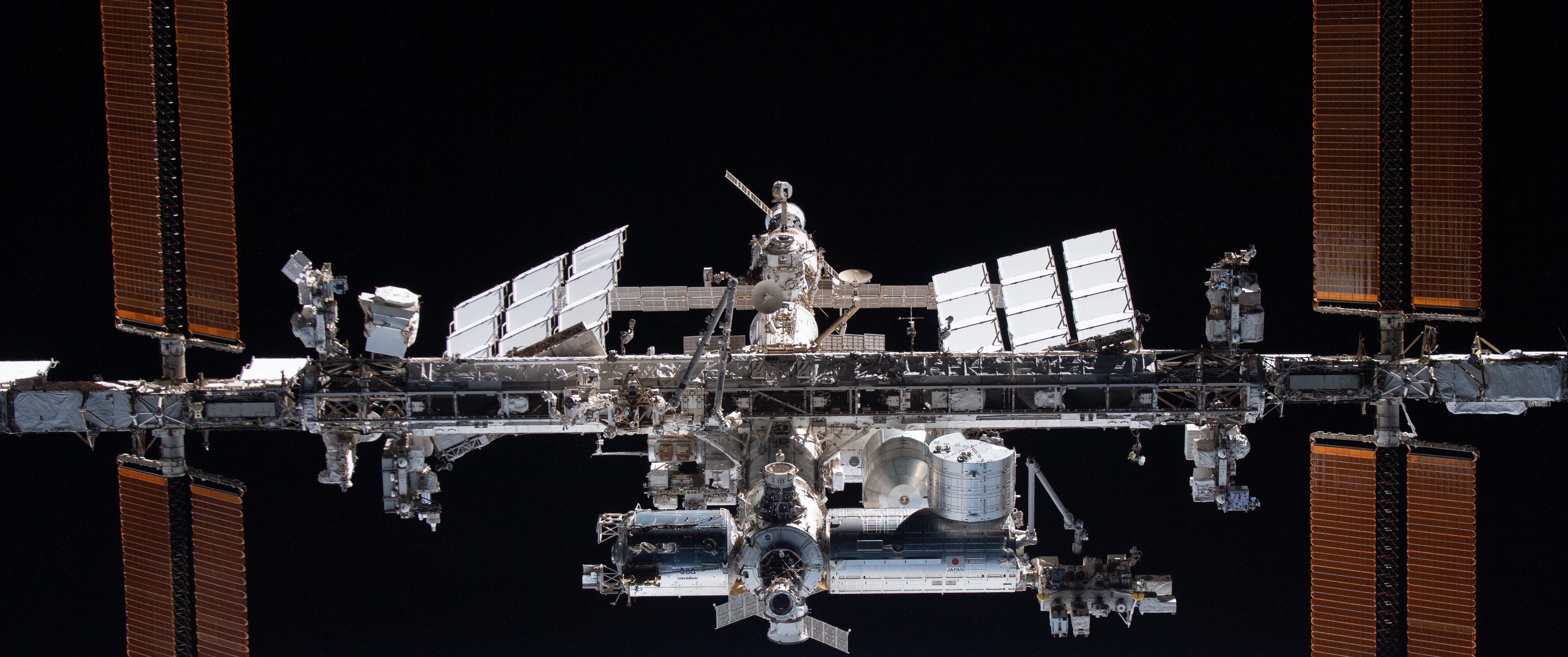
Photovoltaic devices developed at Georgia Tech will be tested on the International Space Station for six months. (Credit: NASA)
Solar cells account for approximately six percent of the electricity used on Earth; however, in space, they play a significantly larger role, with nearly all satellites relying on advanced solar cells for their power. That’s why Georgia Tech researchers will soon be sending 18 photovoltaic cells to the International Space Station (ISS) for a study of how space conditions affect the devices’ operation over time.
To be installed in the Multi-purpose International Space Station Experiment (MISSE) Flight Facility on the exterior of the ISS, the cells will be studied over a six-month period, providing researchers with detailed information on factors affecting their operation in the harsh conditions of space. Among the goals are to obtain data useful for reducing weight and boosting both efficiency and reliability of the devices.
The devices under test will include halide perovskite-based cells, a likely materials platform for next-generation solar cells. Composed of a combination of materials that can be varied according to conditions, halide perovskites differ from the gallium arsenide (GaAs) family of materials commonly used in space – and from the silicon cells common for use on Earth. Which perovskite recipe works best in space applications will be among the questions the Georgia Tech researchers hope to answer.
The test cells will also include silicon-based devices, photovoltaic cells based on III-V materials – so-called because they utilize combinations of materials from the third and fifth rows of the periodic table of the elements – and infrared photodetectors designed for use in space.

“The main goal here is to improve power generation in space,” said Jud Ready, principal research engineer at the Georgia Tech Research Institute (GTRI) and Associate Director of External Engagement with Georgia Tech’s Institute for Matter and Systems. “The limiting factor on the performance of a spacecraft is usually how much power you can produce. Power, size, weight, complexity, cost – all of these are tied closely to the electrical generation of the solar panels.”
MISSE is owned and operated by Aegis Aerospace Inc., which has recently added a new component that will allow measurement of the current-voltage relationship (I-V curve) for photovoltaic devices while they are operating on the exterior of the ISS. With this new capability, cameras, and other instrumentation, the facility will gather data about operation during dramatic temperature swings, frequent changes in illumination levels, space-borne radiation, impact of space debris, and exposure to the erosive effects of atomic oxygen.
The Georgia Tech devices are planned for launch later in 2025 as part of Aegis Aerospace’s MISSE-21 mission.
Read the full article on the Georgia Tech Research Institute website.